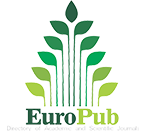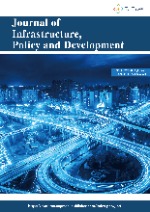|
|
|
Recently Published Issue
Vol 9, No 3 (2025)
Table of Contents
Open-source software (OSS) has emerged as a transformative tool whose implementation has the potential to modernise many libraries around the world in the digital age. OSS is a type of software which permits its users to inspect, share, modify, and enhance through its freely accessed source code. The accessibility and openness of the source code permits users to manipulate, change, and improve the way in which a piece of software, program, or application works. OSS solutions therefore provide cost-effective alternatives that enable libraries to enhance their technological infrastructure without being constrained by proprietary systems. Hence, many countries have initiated and formulated policies and legislative frameworks to support the implementation and use of OSS library solutions such as DSpace, Alfresco, and Greenstone. The purpose of the study reported on was to investigate the leveraging of OSS to modernise public libraries in South Africa. Content analysis was adopted as the research methodology for this qualitative study, which was based on a literature review integrating insights from the researchers’ experiences with the use of OSS in libraries The findings of the study reveal that the use of OSS has the potential to modernise public libraries, especially those located outside cities or urban areas. These libraries are often less well equipped with the necessary technology infrastructure to meet the demands of the digital age, such as online books and open access materials. The study culminated in an OSS framework that may be implemented to modernise public libraries. This framework may help public libraries to integrate OSS solutions and further allow users access to digital services.
Artificial intelligence chatbots can be used to conduct research effectively and efficiently in the fifth industrial revolution. Artificial intelligence chatbots are software applications that utilize artificial intelligence technologies to assist researchers in various aspects of the research process. These chatbots are specifically designed to understand researchers’ inquiries, provide relevant information, and perform tasks related to data collection, analysis, literature review, collaboration, and more. The purpose of this study is to investigate the use of artificial intelligence chatbots for conducting research in the fifth industrial revolution. This qualitative study adopts content analysis as its research methodology, which is grounded in literature review incorporating insights from the researchers’ experiences with utilizing artificial intelligence. The findings reveal that researchers can use artificial intelligence chatbots to produce quality research. Researchers are exposed to various types of artificial intelligence chatbots that can be used to conduct research. Examples are information chatbots, question and answer chatbots, survey chatbots, conversational agents, peer review chatbots, personalised learning chatbots and language translation chatbots. Artificial intelligence chatbots can be used to perform functions such as literature review, data collection, writing assistance and peer review assistance. However, artificial intelligence chatbots can be biased, lack data privacy and security, limited in creativity and critical thinking. Researchers must be transparent and take in consideration issues of informed content and data privacy and security when using artificial intelligence chatbots. The study recommends a framework on artificial intelligence chatbots researchers can use to conduct research in the fifth industrial revolution.
The rise of internet-based pharmacies has transformed the healthcare sector, giving patients access to medications, information, and direct interaction with pharmacists. While online pharmacies have become popular around the world, there are challenges hindering their widespread use in developing countries due to a limited understanding of the factors affecting their acceptance and usage. To bridge this knowledge gap, a study utilized a model combining the unified theory of acceptance and use of technology (UTAUT 2) with the technology acceptance model (TAM) to explore the drivers behind online pharmacy usage in Oman. Through this framework, twelve hypotheses were. A survey involving 378 individuals familiar with online pharmacies was conducted. Structural equation modeling (SEM) was applied to analyze the data and test these hypotheses. The results indicate that factors such as perceived expectancy effort expectancy and facilitating conditions hedonic motivation, habit perceived risk, technology trust, and technology awareness play roles in influencing the adoption of online pharmacies in Oman. The findings suggest that personal innovation plays a moderating role in the connection between perceived risk and behavioral intention, while it has a negative moderating influence on the relationship between technology trust and behavioral intention. Word of mouth was identified as a moderator in enhancing the correlation between behavioral intention and online pharmacy adoption. This research emphasizes the moderating relationship of personal innovation and word of mouth on shaping consumer attitudes towards online pharmacies and their acceptance. In summary, these results add to the existing knowledge on pharmacy adoption and in developed areas such as provide practical insights for online pharmacy providers to improve their offerings and attract a larger customer base.
This study explores approaches to optimizing inclusive education through international and local perspectives. It examines the role of educators in inclusive settings, highlights strategies for early detection of children’s developmental needs, and evaluates inclusive school management practices. Using qualitative case study methods, the research includes comprehensive observations and interviews at Fatma Kenanga Islamic Character School. Findings emphasize the importance of individualized learning plans, shadow teacher involvement, and collaborative stakeholder engagement. Integrating global insights, this study contributes to advancing inclusive education practices in Indonesia and beyond.
Announcements
Notice on the change of publication fees since May 1, 2025 |
|
From May 1 2025 onwards, the Article Processing Charge (APC) for new submissions to the journal will be revised to $500. The previous APC policy of $1800 will remain in effect for submissions made prior to this date. For more details, please find it on the publicaiton fees policy. |
|
| Posted: 2025-04-10 | More... |
Important Announcement Regarding Scopus Indexing of JIPD |
|
We would like to inform you that, as of 17 January 2025, JIPD will no longer be indexed in Scopus. Although JIPD is no longer indexed by Scopus, this change does not reflect any decline in the quality of the research published or our dedication to supporting scholarly communication. We will continue to offer an open platform for original, impactful research across infrastructure, economic development, and public policy. We understand the importance of indexing for the visibility and impact of research, and we are actively pursuing other avenues to enhance the accessibility and influence of the work published in JIPD. Our commitment to rigorous peer-review processes, high-quality publications, and timely dissemination of research remains unchanged. We deeply value your support and trust over the years, and we encourage you to continue submitting your valuable research to JIPD. Your contributions help us continue our mission of fostering academic dialogue and advancing knowledge in this field. Thank you for your ongoing dedication to JIPD. Together, we can continue to make a positive impact on the academic community. |
|
| Posted: 2025-01-20 | |
Manuscript Quality Check Process |
|
| To maintain the high standards of Infrastructure, Policy and Development, we have invited a team of academic editors who perform quality checks at every stage of the manuscript process. This ensures that every submission meets the journal's stringent requirements. For manuscripts that do not meet these standards, the team will make constructive suggestions for revisions, and publication will not occur until they meet the journal's quality standards. |
|
| Posted: 2024-11-14 | |
| More Announcements... |








 ISSN:
ISSN: Open Access
Open Access
